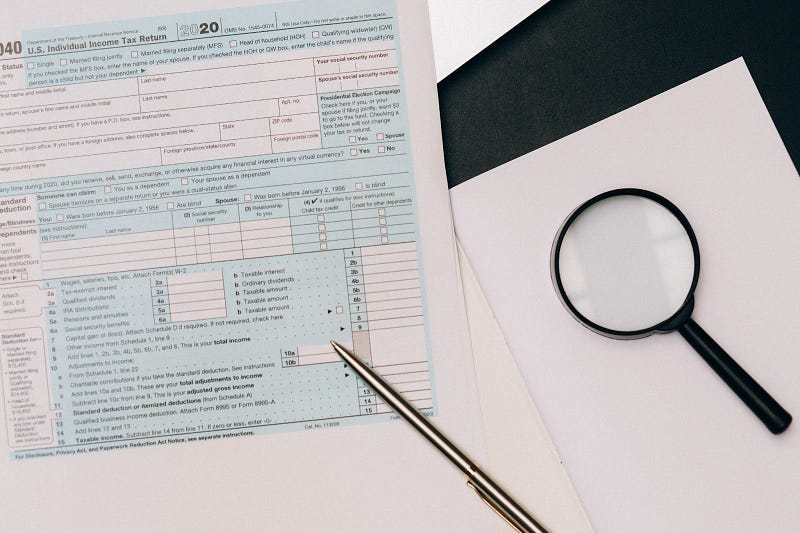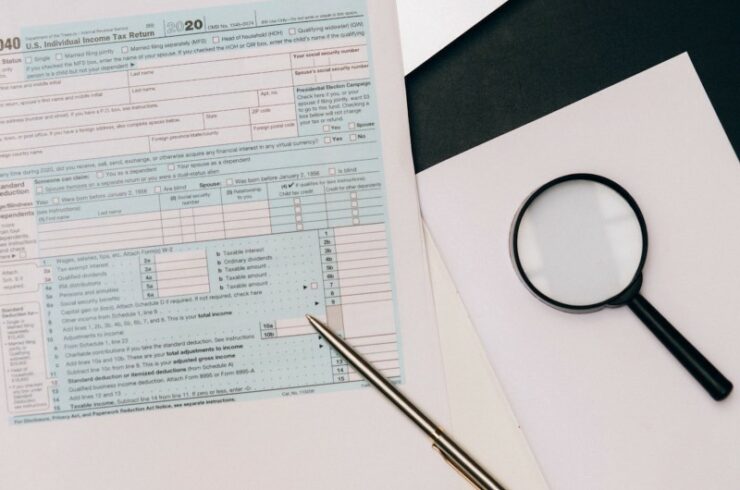Tax: it’s the one thing that can make or break a budget, determine how much money is available for savings and investments, and impact everything from the day-to-day lives of citizens to the overall economy. And, as a business, it’s imperative that you know how withholding tax works and how it impacts your company.

In 2022, the IRS has announced new tax brackets and changes to withholding tax — so what does this mean for your business operations? This article will go over the key details that business owners need to know in order to stay ahead of the game.
What is federal income tax?
As you are likely aware, all people earning an income in the United States are subject to federal income tax. This tax is typically withheld from your paycheck throughout the year, and you file a tax return at the end of the year to report your total income and calculate your tax liability.
However, what you may not know is that federal tax also applies to certain types of income other than wages and salaries. This includes, for example, dividends, interest, capital gains, and self-employment income.
The amount of federal tax that is owed on this type of income depends on your filing status and the amount of income you earn. For example, if you are single and earn $50,000 in interest income, you would owe a certain percentage of that income in federal withholding tax.
Federal withholding tax
In the business context, federal withholding tax is the amount of tax that is withheld from an employee’s paycheck. This money is then sent to the IRS on the employee’s behalf.

The purpose of withholding tax is twofold: first, it ensures that employees pay their appropriate share of taxes throughout the year, rather than waiting until the end of the year to file a tax return. Second, it helps to ensure that the government has the funds it needs to operate by collecting taxes as they are earned, rather than all at once.
What are the federal withholding tax rates in 2022?
There are new income tax brackets introduced in 2022, which means that the withholding tax rates will also be changed. The new withholding tax rates are as follows:
- $0 to $9,950: 10%
- $9,951 to $40,525: 12%
- $40,526 to $86,375: 22%
- $86,375 to $164,925: 24%
- $164,926 to 209,425: 32%
- $209,426 to $523,600: 35%
- $523,600 and above: 37%
So, what does this mean for you as a business owner or employee?
If you are an employee, your employer will need to withhold more tax from your paychecks to cover the increased taxes that you will owe. This may result in a smaller paycheck each month, but it is important to remember that you will still be paying the same amount of taxes in total.

If you are a business owner, you will need to withhold more tax from your employees’ paychecks to cover the increased taxes that they will owe. Additionally, you may need to pay more in taxes yourself, as the new tax brackets apply to both individuals and businesses.
How to correctly withhold tax from employees in the United States
Every country has different rules when it comes to how tax is withheld from employees. In the United States, the federal government sets the guidelines for withholding tax. Employers must withhold an appropriate amount of federal income tax from each employee’s paycheck, based on that employee’s wages and marital status.
The purpose of withholding tax is to ensure that the government has enough money to pay its bills. The federal government collects income tax throughout the year, through withholding tax and other sources. The government then uses this money to pay for things like national defense, social security, and infrastructure.
In order to accurately calculate and withhold the correct amount of federal income tax, employers rely on two key documents: the Form W-4 and the Publication 15.
- Form W-4 is used by employees to tell their employer how much tax should be withheld from their paychecks.
- Publication 15 provides a list of withholding allowances for each type of employee, based on their marital status and number of dependents.
Employers must withhold tax at the appropriate rate for each employee’s filing status. Single employees are taxed at a different rate than married employees, and employees with dependents are taxed at a different rate than those without dependents. The withholding tables in the Publication 15 provide the correct rates for each filing status.
Employees may request that more or less tax be withheld from their paychecks, depending on their individual circumstances. Employers should always use the Form W-4 to determine how much tax to withhold from each employee’s paycheck.
Why it’s important to stay up-to-date
The federal government updates the withholding tax tables each year, in response to changes in the tax code. For example, the Tax Cuts and Jobs Act of 2017 changed the tax rates and filing status thresholds for 2018. As a result, the withholding tables in Publication 15 were updated for 2018.
Employers should always use the most recent version of the withholding tax tables, when calculating how much tax to withhold from employee paychecks. The latest version of the Publication 15 can be found on the IRS website: https://www.irs.gov/forms-instructions.

Miscalculating federal withholding tax in 2022: what can happen?
The reason why it is so important to get your federal withholding tax calculation right is because if you do not withhold enough, then you may have to pay a penalty. In fact, the penalty rate sits at around 0.5% of the underpaid amount; however, this can go up to a cap of 25%.
If that isn’t enough to deter you from making a mistake with your federal withholding tax, note that you may also have to pay interest on the underpaid amount. The interest rate is currently set at 3% for individual payments and 5% for larger corporate payments, but these can increase year-by-year.
Clearly, it is in your best interest to get your federal withholding tax calculation right — especially if you expect to owe money come tax time. If you are unsure of how to do this, consult with a tax professional who can help you ensure that you are withholding the correct amount.
Frequently Asked Questions about withholding tax in the US
If you have further questions about federal withholding tax, the IRS website has a number of resources that can help you. Here is a summary of the most important information and FAQs:
What is federal withholding tax?
Withholding tax is a form of taxation in which taxes are removed from income at the source, before it is paid to the individual. This is done in order to ensure that the government receives its taxes on a regular basis, rather than waiting until tax time, when taxpayers may be obliged to pay a larger sum.

How is withholding tax calculated?
Withholding tax is usually based on how much income an individual earns. The percentage of tax that is withheld will depend on the individual’s tax bracket and other factors, such as whether they are married or have children.
Do I have to calculate my employees’ withholding tax?
Employers are responsible for calculating the withholding tax for their employees. This involves taking into account the employee’s income, deductions, and credits in order to determine how much tax should be withheld.
How can I calculate my employee’s withholding tax?
There are a number of online calculators that can help you to calculate your employee’s withholding tax. The IRS also offers a withholding calculator on its website. Additionally, Form W-4, which employees complete to indicate their tax withholding preferences, can help you to calculate the appropriate amount of withholding.
What is the difference between withholding and estimated tax?
Withholding tax is a form of taxation in which taxes are removed from income at the source. Estimated tax is a method of paying taxes throughout the year, rather than all at once. It is usually used by individuals who do not have taxes withheld from their income.
Final thoughts
With new tax brackets being introduced in 2022, now is an excellent time to brush up on your understanding of federal withholding tax. This article has hopefully provided you with a good summary of what will be changing and why it matters.
The new tax brackets are likely to result in a lower tax bill for many Americans. However, it’s important to note that not everyone will benefit from the new brackets in the same way. In particular, those who earn a high income and have lots of deductions may find that they pay more tax under the new system.

One of the main ways that the new tax brackets will impact taxpayers is through federal withholding tax. It’s important to get your withholding tax right, as too little can lead to a big bill come tax time, while too much can mean you lose out on valuable refunds.
The new tax brackets have already come into effect in 2022, and therefore, it’s important to start thinking about how the changes might impact you now. The best way to do this is to use the IRS’s withholding calculator. This will help you to work out how much tax your employer should be withholding from your paychecks based on your individual situation.
Note: Keep in mind that your individual situation may vary, so always speak to an accountant or tax specialist if you have any specific questions.
